3D-printed sculptures create optical illusions using the Fibonacci sequence
Design lecturer John Edmark has created a series of designs for 3D-printed sculptures that appear to move, utilising an effect similar to a zoetrope (+ movie).
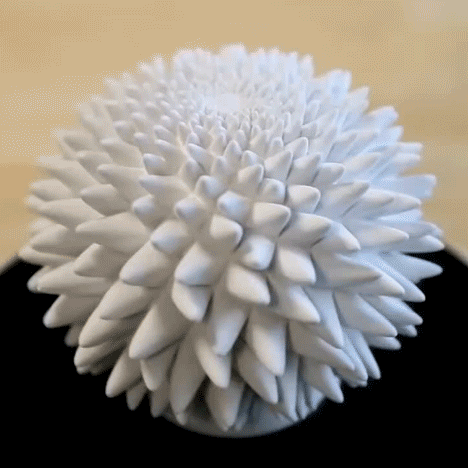
Product designer John Edmark has shared instructions for creating his Blooming Zoetrope Sculptures, which are based on naturally occurring examples of the Fibonnaci sequence and "golden angles" in nature, on DIY website Instructables.
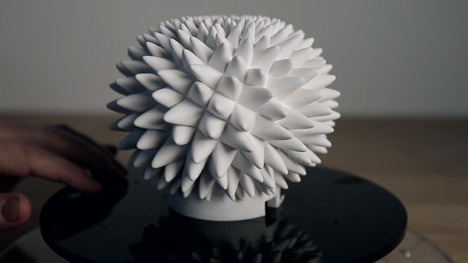
As the sculptures spin on a rotating base, the leaves and patterns on them appear to move up and down when they are lit with a strobe light.
The designer, who teaches at Stanford University as well as running his own firm, created the designs as part of his role as artist in residence for Instructables, the popular DIY network that was bought by software giant Autodesk in 2011.
"If you follow what appears to be a single petal as it works its way out and down the sculpture, what you are actually seeing is all the petals on the sculpture in the order of their respective distances from the top-centre," explained Edmark in his Intructables post.
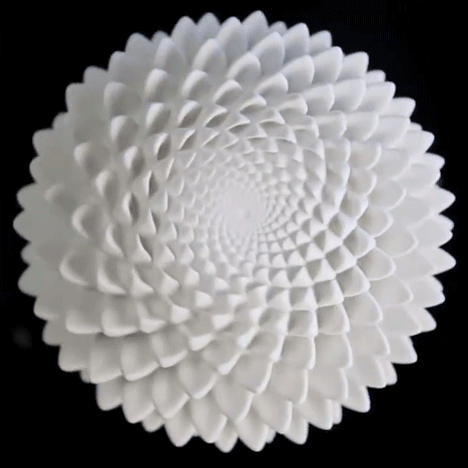
"The placement of the appendages on these sculptures is critical to the success of the animation effect. The positions are based on a specific phyllotaxy (i.e. leaf order) used by nature in a number of botanical forms, including pinecones, pineapples, sunflowers, artichokes, palm trees, and many succulents."
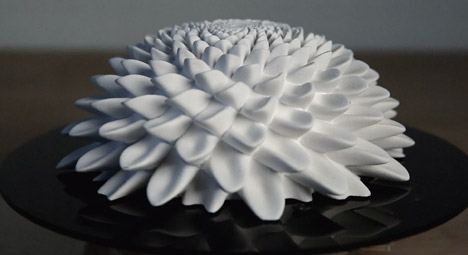
The sculptures come in three main variations – a piece covered in cube-like geometric angles that seem to be bursting out of the surface, another that appears to be formed of stacked hollow doughnuts punctured with holes, and a group of pieces with petals. The petal sculptures include one piece that looks almost like an anemone, while the others are more similar to an artichoke.
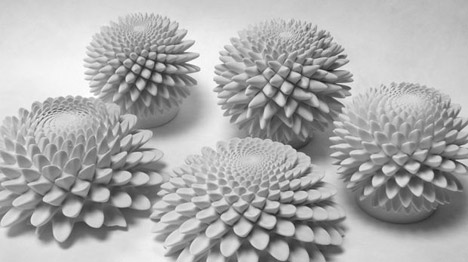
To create the model for each of his designs, Edmark arranged each petal around a central core at an angle of 137.5 degrees from the previous one, starting from the top and working down.
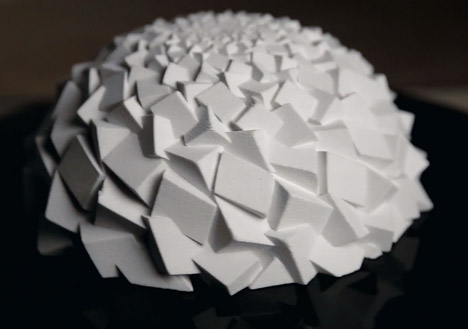
"137.5 degrees is a very special angle, called the golden angle, based on the golden ratio. When that angle is used by nature as a growth strategy it leads to the formation of spiral patterns," said Edmark. "If you were to count the number of spirals in these patterns you will find that they are always a Fibonacci number."
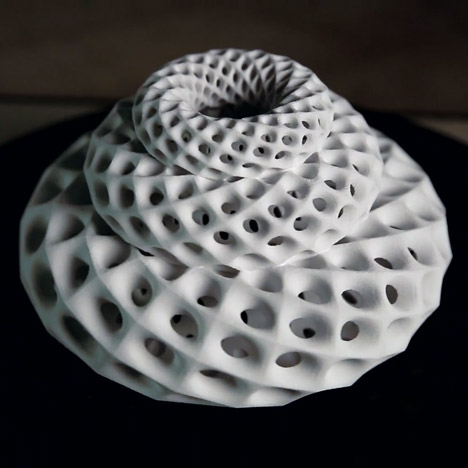
In the Fibonnaci sequence, each number is the sum of the previous two. The sequence is named after Leonardo of Pisa, also known as Fibonnaci – a nickname thought to be short for "filius Bonacci", or "son of Bonacci" after his father – who introduced the sequence into western mathematics in 1202 with his Book of Calculation.
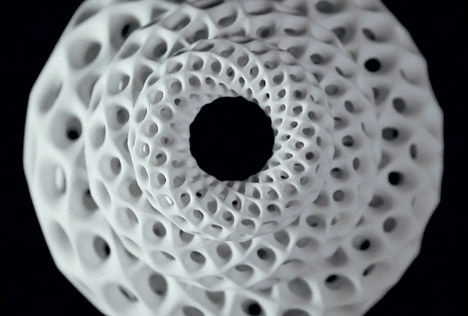
The computer models for the sculptures were created using Rhino software with a scripting programme called Python. They were then exported as files and printed using a Zprinter 450.
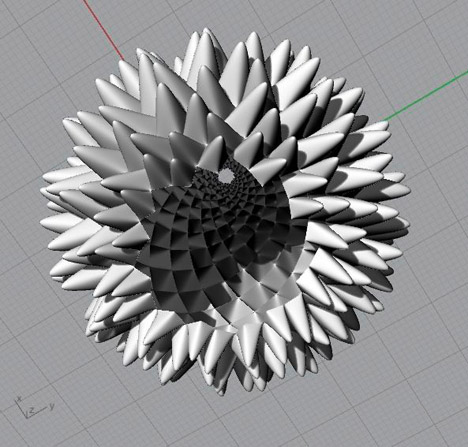
The sculptures can be ordered ready-made from 3D-printing site Shapeways.
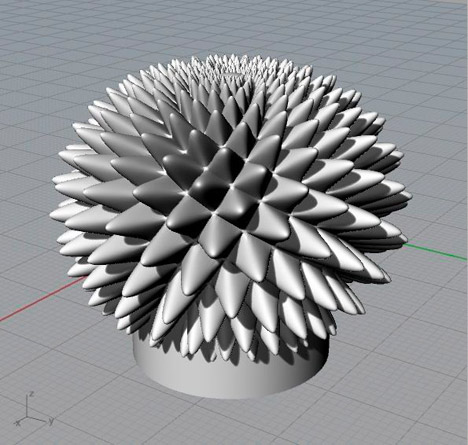
Edmark also offers tips for recreating his sculptures, with details on how to make the rotating base and the speed at which the strobe light needs to flash to create the zoetrope effect.
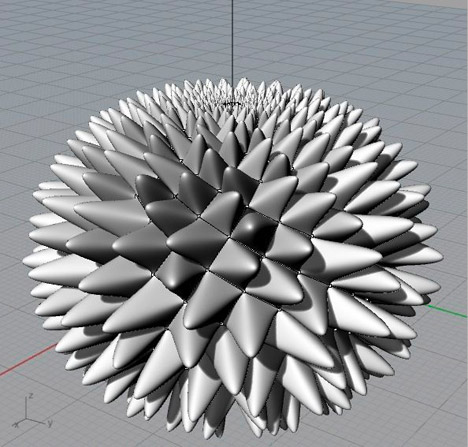
The Blooming Zeotrope Sculptures follow on from previous projects by Edmark, including a Fibonacci sequence puzzle, rotating wooden spirals and a series of pieces that combine air and water with ping pong balls to create kinetic art works.